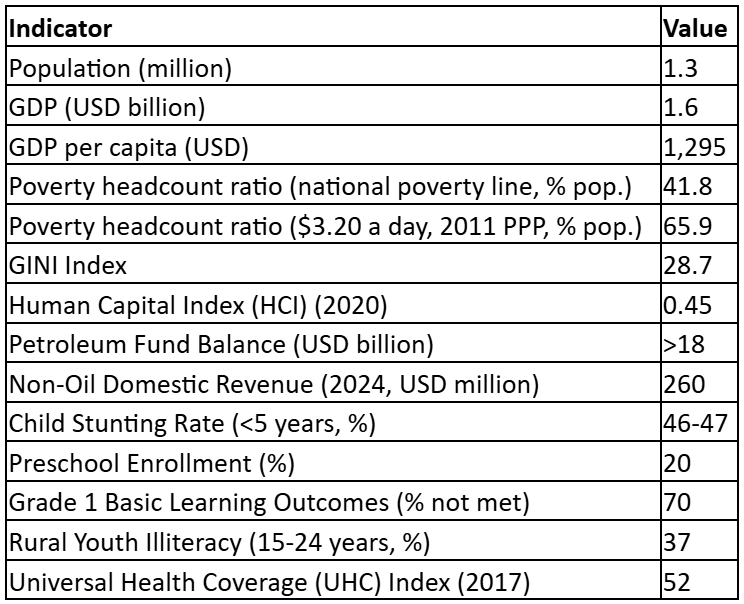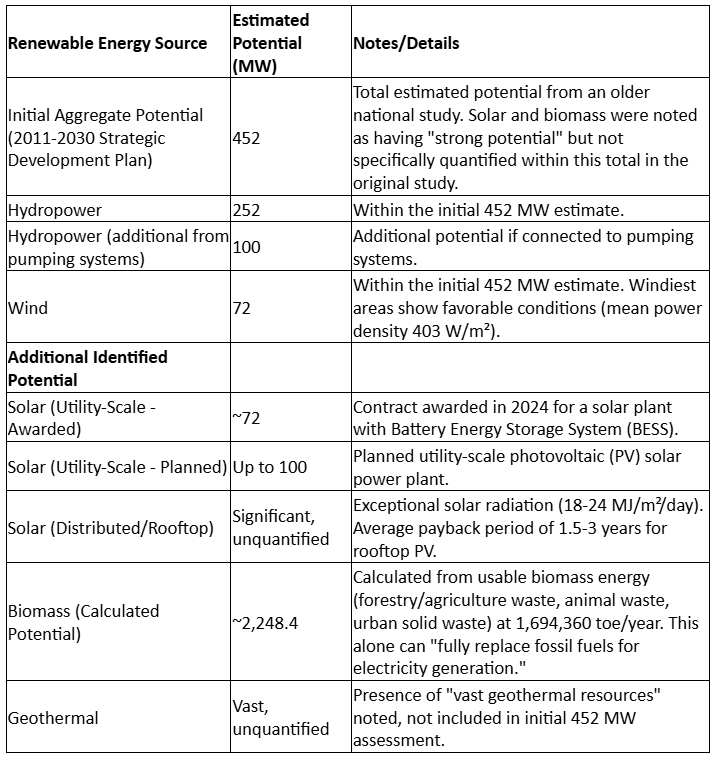Timor Leste in ASEAN: A catalyst for regional growth
 Unsplash
Unsplash Unsplash
Unsplash· 8 min read
This article is part of a two part series. You can find part two here.
Introduction: Timor Leste's path to ASEAN integration
The path taken by Timor Leste to become a full member of the Association of Southeast Asian Nations (ASEAN) marks an important turning point in the geopolitical and economic development of the region. Asia's youngest country has repeatedly expressed its desire to join the bloc since achieving independence in 2002, and in 2011 it formally applied. This persistent endeavour demonstrates a strong strategic dedication to regional integration, seeing ASEAN as an essential platform for its stability and prosperity in the future. The "in principle" agreement for admission in 2022 and the subsequent award of observer status gave the accession trajectory a crucial boost. Malaysian Prime Minister Anwar Ibrahim, whose nation will serve as ASEAN chairman in 2025, announced that the current goal for full membership is set for October 2025.
This admission is a basic geopolitical objective for Timor Leste, not just a symbolic gesture. It promises improved international ties, more foreign investment, crucial economic diversification away from its dependency on oil and gas, and stronger regional integration. Membership is about "amplifying the nation's voice on the regional stage and aligning with ASEAN's broader Outlook on the Indo-Pacific," as Foreign Minister Bendito dos Santos Freitas put it. The addition of Timor Leste as ASEAN's eleventh member reaffirms the organization's dedication to diversity and enhances its reputation as an advocate for stability, democracy, and growth in the Indo-Pacific area. Additionally, it deepens ASEAN's strategic and geographic reach, giving its combined influence a new angle.
To fully appreciate the consequences of Timor Leste's ASEAN membership, one must have a thorough understanding of the country's existing developmental situation. Along with a wide range of intricate economic and social issues, the country has a substantial amount of unrealised potential in the field of renewable energy.
With a GDP of USD 1.6 billion and a GDP per capita of USD 1,295 USD, Timor Leste's economy is in a recovery phase. One important finding, though, is that since its peak in 2016, the non-oil GDP per capita has been trending downward. With a Petroleum Fund worth over $18 billion, or around ten times the yearly gross domestic product, the economy is still heavily reliant on it. With 83% of all public expenditures in 2024 being financed by this fund—a significant rise from 73% in 2023—it has been the backbone of public spending.
The use of this fund is a major source of vulnerability. There are worries that significant government budget deficits may completely empty the Petroleum Fund by the end of the 2030s due to the declining oil and gas output from the Bayu-Undan field. This looming "fiscal cliff" emphasises how urgently economic diversification is needed. This crucial issue was further highlighted in 2024 when domestic non-oil income dropped by 9% to a meagre $260 million. Timor Leste's private sector desperately needs to diversify since job creation is still hampered by a lack of economic dynamism.
Timor Leste's human capital is significantly impacted by significant social development issues. An estimated 41.8% of its people live below the federal poverty level, and an even greater 65.9% make less than $3.20 per day (2011 PPP). In 2020, Timor Leste's Human Capital Index (HCI) was 0.45, well below the average for the East Asia & Pacific region (0.59) and comparable lower-middle-income nations. Significant human capital deficiencies that obstruct long-term development are indicated by this low HCI score.
The educational system is especially troubled. Just 20% of preschool-aged youngsters attend school. An astounding 70% of first-graders fail to satisfy basic learning objectives, pointing to serious problems with the quality of education. Young people aged 15 to 24 have a startlingly high 37% illiteracy rate in rural areas compared to only 6% in metropolitan areas. Older buildings, high dropout and repetition rates, problems with language variety, and a dire teacher shortage all contribute to these shortcomings.
The existence of a serious intergenerational human capital trap is a crucial finding. Stunting rates are among the highest in the world, affecting 46% to 47% of children under five. Children are not obtaining enough nourishment or good-quality education as a result of this chronic undernutrition, low fundamental learning results, and widespread rural illiteracy. Their cognitive and physical development is hampered, which significantly reduces their potential for future output and feeds poverty cycles.
Table 1: Timor Leste key economic and social development indicators
The majority of Timor Leste's electricity is currently produced using fossil fuels, with a significant reliance on imported fuels. In spite of this, the nation has a vast amount of unrealised potential for renewable energy. The ambitious goal of 50% of the country's energy coming from renewable sources by 2030 is outlined in the government's Strategic Development Plan (2011–2030). Even though Timor Leste has had 100% access to power since 2021, the switch to renewable energy has been sluggish.
Table 2: Timor-Leste's Comprehensive Renewable Energy Potential 
The economic, social, and environmental landscapes of Timor Leste stand to undergo significant changes as a result of its full ASEAN membership, providing a planned route for quicker development.
Timor Leste will be able to take advantage of the many opportunities offered by the ASEAN Economic Community (AEC), a single market and manufacturing base that comprises more than 600 million people, once it becomes a full member. For Timor Leste to diversify its economy and move away from its current strong reliance on petrol and oil, this access is essential. The ability of Timor Leste to take advantage of the largest free trade deal in the world, the Regional Comprehensive Economic Partnership (RCEP), which comprises ASEAN nations, Australia, China, Japan, New Zealand, and South Korea, will be very beneficial. By aligning standards, RCEP will make it easier for Timorese exporters to reach markets, especially in its fledgling agriculture sector, and increase its attractiveness to investors.
Use case: Organic coffee exports
Timor Leste is known for its high-quality organic coffee. ASEAN and RCEP membership can significantly boost this sector by:
• Reduced tariffs and non-tariff barriers: Making Timorese coffee more competitive in regional markets.
• Standardisation and certification: Alignment with RCEP standards can facilitate easier entry into larger markets like China, Japan, and South Korea, which have growing demand for organic products.
• Integrated value chains: Participation in regional supply chains could lead to higher value-added processing within Timor Leste, rather than merely exporting raw beans.
Through the ASEAN Socio-Cultural Community (ASCC), in particular, Timor Leste's accession to ASEAN offers a crucial foundation for speeding its social development. Through collaborative projects that are people-centred and people-oriented, with an emphasis on social welfare, poverty alleviation, and human development, the ASCC is committed to achieving the full potential of ASEAN citizens. Through regional collaboration and capacity-building initiatives, this integration presents substantial opportunity to improve health and nutrition outcomes, raise ICT literacy, and improve the quality of education.
"Narrowing the Development Gap" (NDG) is the ASCC's primary objective, and it offers a defined framework for focused assistance to close gaps across member states.
Timor Leste's membership in ASEAN brings it into line with the bloc's shared sustainability agenda, which is a fundamental component of ASEAN's agenda 2045. Its energy transition is greatly aided by this integration. Timor Leste can speed its transition to renewable energy and improve its energy security by participating in the ASEAN Power Grid (APG) initiative and the ASEAN Plan of Action for Energy Cooperation (APAEC), which can offer technical expertise, investment, and policy harmonisation.
Use Case: Timor Leste as a clean energy exporter
A new economic pillar might be created from Timor Leste's enormous potential for renewable energy, especially its estimated biomass potential of about 2,248.4 MW (enough to "fully replace fossil fuels for electricity generation") and substantial solar resources. The ASEAN Power Grid gives Timor Leste a way to sustainably provide its own energy demands while also having the ability to export renewable energy to the area, which would bring in a sizable amount of money outside of oil. This aligns economic diversification with climate action by offering a tangible, sustainable substitute for its diminishing Petroleum Fund.
The impending ASEAN membership of Timor Leste is a calculated investment in Southeast Asia's future rather than merely an extension of the grouping. Although there are many developmental obstacles to overcome, Timor Leste's admission provides a well-organised route to reducing economic reliance, tackling pressing social issues, and taking advantage of its enormous potential for renewable energy. By incorporating Timor Leste, ASEAN expands its strategic reach and fortifies its core values of inclusivity. A more cohesive and robust regional community, where the combined might of the eleven countries can propel sustainable progress and stability, is made possible by this mutual imperative.
Although Timor Leste's future will necessitate coordinated efforts in institutional reform and human capital development, the ASEAN framework offers the support and chances for revolutionary transformation that the country needs. This change is about strengthening Southeast Asia's unity and influence, not just about Timor Leste's personal development.
illuminem Voices is a democratic space presenting the thoughts and opinions of leading Sustainability & Energy writers, their opinions do not necessarily represent those of illuminem.
Gokul Shekar

Effects · Climate Change
illuminem briefings

Mitigation · Climate Change
illuminem briefings

Climate Change · Environmental Sustainability
Financial Times

Carbon Market · Public Governance
The Guardian

Agriculture · Climate Change
Euronews

Climate Change · Effects